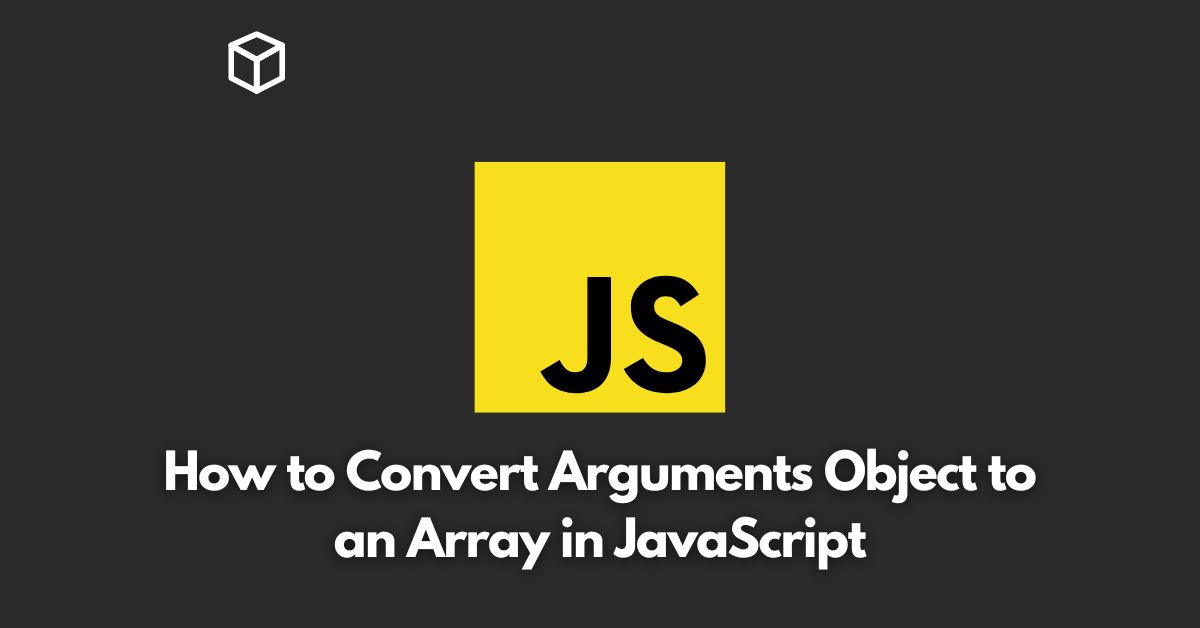The JavaScript arguments object is an array-like object that provides access to the arguments passed to a function.
However, it is not an instance of the Array object, and it doesn’t have all the Array object methods.
In some cases, you may need to convert the arguments object to a true Array object to use array methods on it.
In this Javascript tutorial, we will explore the different methods to convert the arguments object to an Array in JavaScript.
Using the Array.from() method
The Array.from() method is used to create a new, shallow-copied Array instance from an array-like or iterable object.
The arguments object can be passed as an argument to Array.from() to convert it to an Array.
Here’s an example:
function example() {
const args = Array.from(arguments);
console.log(args);
}
example(1, 2, 3); // [1, 2, 3]Using the Spread Operator (…)
The spread operator (…) can be used to convert the arguments object to an Array by spreading its elements into a new Array.
Here’s an example:
function example() {
const args = [...arguments];
console.log(args);
}
example(1, 2, 3); // [1, 2, 3]Using the slice() method
The slice() method can be used to convert the arguments object to an Array by calling slice on the arguments object and passing it to an Array constructor.
Here’s an example:
function example() {
const args = [].slice.call(arguments);
console.log(args);
}
example(1, 2, 3); // [1, 2, 3]Using the Array.prototype.slice.call() method
You can use the Array.prototype.slice.call() method to convert the arguments object to an Array.
This method works by calling the slice method on the Array prototype and passing the arguments object as this to the slice method.
Here’s an example:
function example() {
const args = Array.prototype.slice.call(arguments);
console.log(args);
}
example(1, 2, 3); // [1, 2, 3]Conclusion
In this tutorial, we have discussed the different methods to convert the arguments object to an Array in JavaScript.
You can use any of these methods depending on your requirements and the context of your code.
Just remember to use the method that best fits your needs and makes your code readable and maintainable.




